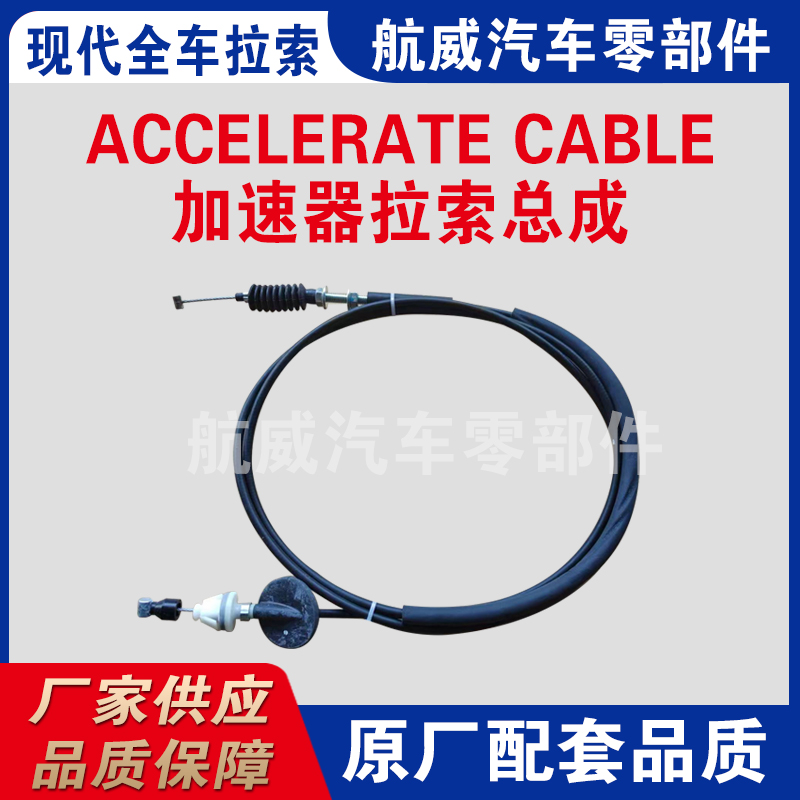accelerator throttle cable
Understanding the Accelerator Throttle Cable A Crucial Component for Engine Performance
The accelerator throttle cable is a vital component in an automobile that connects the accelerator pedal to the engine’s throttle body, controlling the amount of air entering the engine. This system plays a crucial role in regulating engine speed and performance, making it an essential part of any vehicle’s operation. In this article, we will explore the importance, function, maintenance, and potential issues related to the accelerator throttle cable.
The Importance of the Accelerator Throttle Cable
In the simplest terms, the accelerator throttle cable serves as the link between the driver and the engine. When a driver presses down on the accelerator pedal, this action pulls the throttle cable, which in turn opens the throttle valve located in the engine's intake manifold. As the throttle valve opens, it allows more air into the engine, facilitating an increase in power and speed. Conversely, releasing the pedal reduces tension on the cable, closing the throttle valve and thereby decreasing engine power.
The efficiency of the accelerator throttle cable is fundamental to achieving optimal engine performance. A correctly functioning cable ensures that the engine responds promptly to the driver’s commands, which is crucial for smooth acceleration and deceleration. Additionally, with modern advancements such as drive-by-wire systems, the throttle cable has evolved to include electronic sensors and actuators that further refine engine performance and response time.
Functionality of the Accelerator Throttle Cable
The accelerator throttle cable operates through a simple yet effective mechanical mechanism. Typically made of a flexible, high-strength material, the cable is encased in a protective sheath. One end of the cable is connected to the accelerator pedal, while the other end is attached to the throttle body.
When the pedal is depressed, the cable experiences tension, pulling the throttle open. This action is often facilitated by a series of pulleys and levers that amplify the movement of the pedal for a more responsive feel. The speed at which the throttle opens depends on how much pressure is applied to the accelerator pedal, allowing the driver to control acceleration smoothly.
accelerator throttle cable

In modern vehicles, the traditional mechanical throttle cable is often replaced with electronic throttle control (ETC) systems. These systems use sensors to detect the position of the accelerator pedal and send an electronic signal to a throttle actuator, which adjusts the throttle valve accordingly. This technology improves fuel efficiency, reduces emissions, and enhances the overall driving experience.
Maintenance and Common Issues
Like any mechanical component, the accelerator throttle cable requires regular maintenance to ensure its longevity and proper functioning. Over time, the cable can become frayed, stretched, or contaminated with dirt and grime, leading to sluggish response times and potential throttle sticking. Signs of a failing throttle cable may include inconsistent acceleration, difficulty in achieving desired speeds, or unusual noises when pressing the accelerator.
To maintain the throttle cable, it is advisable to periodically inspect it for signs of wear and tear. Lubricating the cable can aid in reducing friction and prolonging its life. If any issues are detected, replacing the throttle cable promptly can prevent further complications, including complete throttle failure, which can be dangerous while driving.
In vehicles equipped with ETC, maintenance is slightly different. While the system is generally more reliable, issues can arise, such as faulty sensors or wiring problems. In such cases, diagnostic tools may be necessary to pinpoint the problem before addressing it.
Conclusion
The accelerator throttle cable, whether mechanical or electronic, plays a pivotal role in vehicle performance and driver experience. Understanding its function and importance can help vehicle owners appreciate the complexity of automotive engineering. Regular maintenance and prompt attention to any emerging issues are vital for keeping the system functioning efficiently. As technology continues to advance, the evolution of the throttle control system promises even greater improvements in performance, efficiency, and driver satisfaction, making it an exciting aspect of modern vehicle design.
-
Upgrade Your Control with Premium Throttle CablesNewsAug.08,2025
-
Stay in Control with Premium Hand Brake CablesNewsAug.08,2025
-
Experience Unmatched Performance with Our Clutch HosesNewsAug.08,2025
-
Ensure Safety and Reliability with Premium Handbrake CablesNewsAug.08,2025
-
Enhance Your Vehicle with High-Performance Clutch LinesNewsAug.08,2025
-
Elevate Your Ride with Premium Gear CablesNewsAug.08,2025
